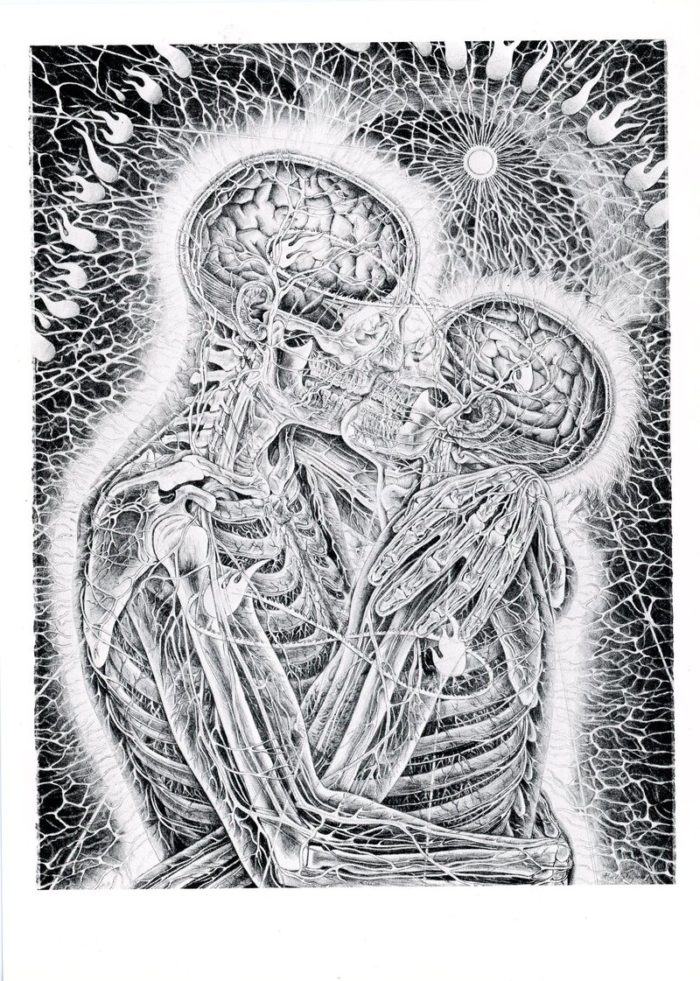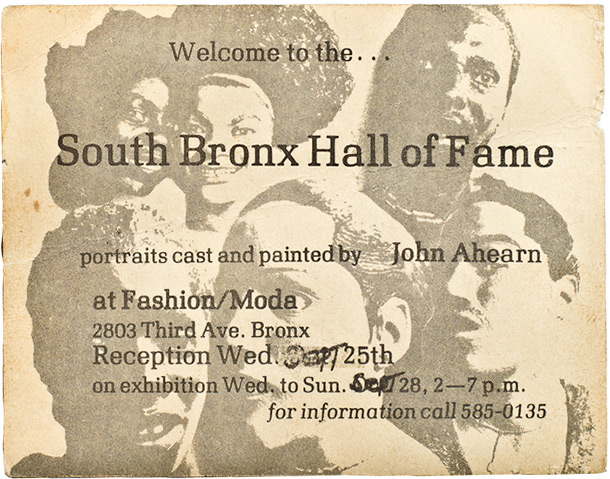
This small card uses a lettering style that was first developed for posters advertising San Francisco’s “psychedelic” rock bands.
During its ten-year run as a gallery from 1986–1995, Psychedelic Solution provided a populist alternative to art styles found in other galleries. Jacaeber Kastor, the founder of Psychedelic Solution, had grown up in San Francisco, where as a teenager he developed a passion for the art that emerged out of Haight-Ashbury during its hippie heyday in the late 1960s.
Although Psychedelic Solution sold black-light posters, concert cards, and underground comics, it aspired to be more of a fine arts gallery than a “hippie head-shop.” It soon became an important showcase for Rick Griffin, Robert Williams, Robert Crumb and the many other accomplished artists who can be credited with pioneering what is now known as psychedelic art.
As the term implies, this is art inspired by LSD and other mind-expanding drugs. While there are clear links to Surrealism and the stylistic influence of late-19th century poster art, the art world has been resistant to include this genre into its mainstream narrative. In 2022, a large exhibition of Kastor’s personal collection curated by artist Fred Tomaselli was exhibited at the Outsider Art Fair, not at a more mainstream venue like Art Basel.
Could this be changing? Former New York Times art critic Ken Johnson convincingly argued for psychedelic art’s importance in his 2011 book Are You Experienced? How Psychedelic Consciousness Transformed Modern Art. Today’s art world appears much more open to previously excluded trends. The counterculture art of the 1960s might be next.
You can view more ephemera from Psychedelic Solution on Gallery 98’s special Psychedelic Solution page.

There are echoes of Surrealism and other historic art styles in this anonymous drawing used as one side of a Psychedelic Solution business card.

Victor Moscoso, Sex, Rock & Roll & Optical Illusion, Card, Psychedelic Solution, 1987
Size: 5 x 7 inches
After studying art at Cooper Union, Yale University and the San Francisco Art Institute, Moscoso achieved fame designing posters and contributing to underground comics.

A late arrival to the Psychedelic movement, the multi-talented Mothersbaugh is best known as the musician behind Devo and numerous movie soundtracks.

Robert Crumb, Cave Wimp, Card for the Exhibition “The Release of Zap Comix #12,” Psychedelic Solution, 1989
Size: 3.75 x 5.75 inches
$125
Today cartoonist Robert Crumb is represented by the blue-chip David Zwirner Gallery. His most famous characters were developed in the 1960s, at a time when he frequently took LSD which was then still legal.

A full selection of Alex Grey’s art, and that of his wife Allyson Grey, can be seen at the Chapel of the Sacred Mirrors, a museum-sized space they created in Wappinger Falls. Since the mid-1970s they have advocated the use of psychoactive drugs for spiritual development.

Psychedelic Solution honors Tim Leary with the Civil Disobedience Award for advocating and promoting the use of psychedelics.

Dictionary definitions of the words “psychedelic” and “solution” appear on one side of this small promotional card. The reverse features a logo-like emblem designed by Rick Griffin.

















